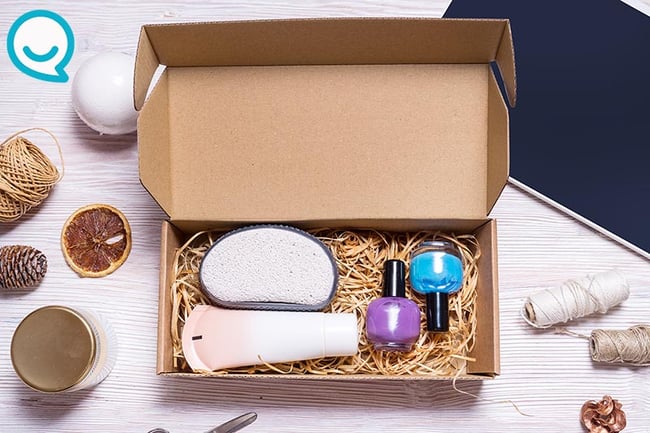Because of the changing face of the industry, many companies are giving their marketing efforts a well-needed makeover.
The 2020s are shaping up to be a massive decade for the beauty industry. Now valued at $532 billion, this market is expected to grow between 5 to 7% in the next few years. Certain categories — skincare and hair, for example — are on track to see more than 10% sales growth year-over-year.
Beauty’s rapid growth has attracted many new competitors, many of whom are introducing new products, fresh ideas and innovative business models. Retailers such as H&M, for example, have started their own beauty lines. Other companies are seeing traction by focusing on demographics that have historically been under-served by big beauty brands.
Because of the changing face of the industry, many companies are giving their marketing efforts a well-needed makeover. Here’s a look at the beauty marketing trends that will transform this massive market in 2020 and beyond.
Embracing the budding CBD category
Products infused with Cannabidiol (CBD), an active ingredient in cannabis derived from the hemp plant, are starting to dominate beauty aisles. Companies like Sephora, Barneys and Neiman Marcus now offer CBD products, with analysts expecting more brands to follow suit. Increasing Google searches — as well as sales revenue — suggest significantly more interest for CBD beauty products.
Retailers are getting in on this category, with companies such as Walgreens, CVS and Kroger getting ready to stock up on CBD beauty products. But some experts believe retailers may need to tread lightly.
2020s will see clearer regulations, more information on the category’s efficacy, and changing consumer perceptions.
“My 2020 prediction for the CBD industry is that it will be an extremely volatile time,” Olivia Alexander, founder of CBD product company Kush Queen, recently told Glossy. “Retailers have taken chances on brands that don’t actually have clout. The FDA is now present, and we will see a lot of brands not make it past the next shift in regulation.”
That said, it’s a good bet that the 2020s will see clearer regulations, more information on the category’s efficacy, and changing consumer perceptions—factors that will drive more demand for the CBD market and attract new players. As the competition heats up in the next decade, it will become super critical for companies to capture accurate and timely customer insights and understand the authentic thoughts and feelings of beauty consumers.
Saying no to airbrushing
The beauty industry’s obsession with Photoshop is not a big secret, but pressure from consumers and many celebrities are forcing companies to reconsider.
In 2018, CVS made headlines by pledging to stop airbrushing its ads. The move earned kudos from consumers and got heavy media coverage, but more importantly, it resulted to an increase in sales. According to PR Week, average daily sales are up following the announcement, with CVS’s beauty sales growing 10 times faster (compared to other retailers) among millennials in their 30s.
Unilever’s Dove, another brand that pioneered the concept of “real beauty,” recently partnered with Getty Images to create #ShowUs, a stock image library of unaltered photographs of women. According to Marketing Dive, the images were captured by women, non-binary and female-identifying photographers. Dove’s initiative was inspired by market research conducted by the company showing that 70% of women don’t feel advertising and media accurately reflect them.

Going direct to consumer
The popularity of subscription boxes hasn’t gone unnoticed in this industry. Direct-to-consumer start-ups such as Birchbox and Glossier have built massive and passionate consumer bases within a short amount of time. Not to be outdone, big brands such as Walmart and Sephora have also now launched their own subscription boxes.
Richard Kestenbaum, co-founder and partner at Triangle Capital LLC, says the direct-to-consumer strategy offers many advantages. For instance, it eliminates the need to share profits with a retailer. More importantly, “selling direct-to-consumer enables two-way communication between the brand and the consumer, without interference from the retailer.”
Building initial awareness might be an issue for newer players.
Beauty-product manufacturers, however, should consider the challenges of adopting the direct-to-consumer route. Building initial awareness, for instance, might be an issue for newer players. One solution is to use customer insights to uncover new opportunities. Kestenbaum recommends “identifying a market that has been overlooked or taken for granted by larger, more established companies.”
As the direct-to-consumer strategy heats up in the 2020s, marketing campaigns that speak directly to the needs of such a market can help companies build a passionate following and eventually drive subscription revenue.
Marketing to men
For decades, many beauty companies marketed only to women, but that’s quickly changing. In the past few years, companies like Target and Goodfellow & Co. have introduced products catered exclusively for men. One study found that sales for male-targeted skincare products grew by 7% in 2019, easily outpacing the wider CPG market.
Many experts believe men hold the key to the growth of the beauty industry.
According to experts, several factors are contributing to the growth of the male beauty space — everything from the popularity of K-pop to the rise of social media and YouTube influencers. Evolving perceptions on masculinity and gender expectations are also encouraging more men to try and buy beauty products.
Many experts believe men hold the key to the growth of the beauty industry. But to meet the evolving needs of this evolving market, companies need to invest in market research to better understand the motivations of different consumer personas as well as the barriers to their purchase.
Doubling down on influencer marketing
Influencers are changing the face of the beauty industry. While in the past, companies relied on multi-million-dollar celebrity deals to promote products, many beauty brands today are opting to work with YouTubers and Instagram stars instead.
67% of consumers trust social media influencers when it comes to getting information about beauty products.
And according to research from Harvard Business School, influencer marketing is proving to be effective. The study found that 67% of consumers trust social media influencers when it comes to getting information about beauty products — easily outranking third-party reviews, beauty professionals and company ads.
“People used to watch celebrities on the red carpet talking about what they were wearing, or they would flip through magazines and look at celebrities in makeup ads, but that has lost its traction, especially among younger consumers,” said Harvard Business School MBA graduate Alessia Vettese, author of the study. “Now, people want to go online and get an at-your-fingertips experience. They want to ask an influencer questions and get personal responses.”
While it makes sense for beauty brands to invest in influencer marketing, it’s important not to do so blindly. At the very least, companies need to understand which social media platforms are most effective for influencers in their industry. Leveraging customer insights can also help beauty brands measure the ROI of their efforts and more accurate gauge the influence of the personalities they’re partnering with.
A dynamic, evolving market
The makeover of the beauty industry will continue as long as consumer preferences and behaviors change. Companies need to engage with their target audiences on an ongoing basis to differentiate real trends from fads and to build effective products and marketing campaigns. Uncovering the authentic thoughts and feelings of beauty customers and engaging these people in fresh new ways will only grow in importance in the years ahead.

Dara St. Louis
SVP & Founding Partner, Reach3 Insights







.webp?width=65&height=83&name=A-LIGN_HIPAA%20(1).webp)

